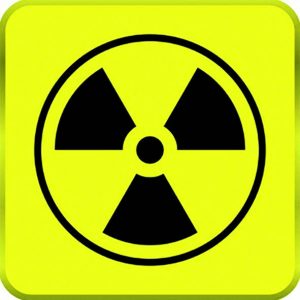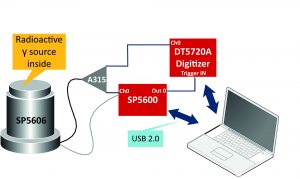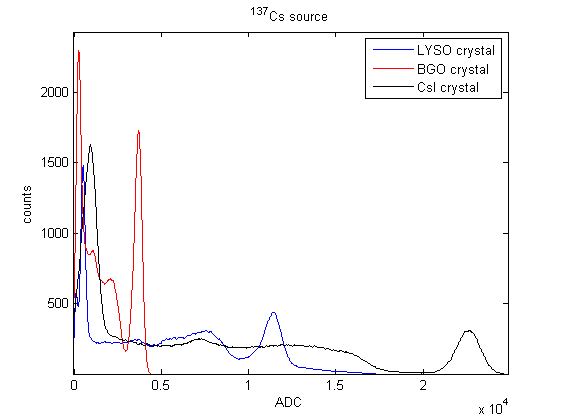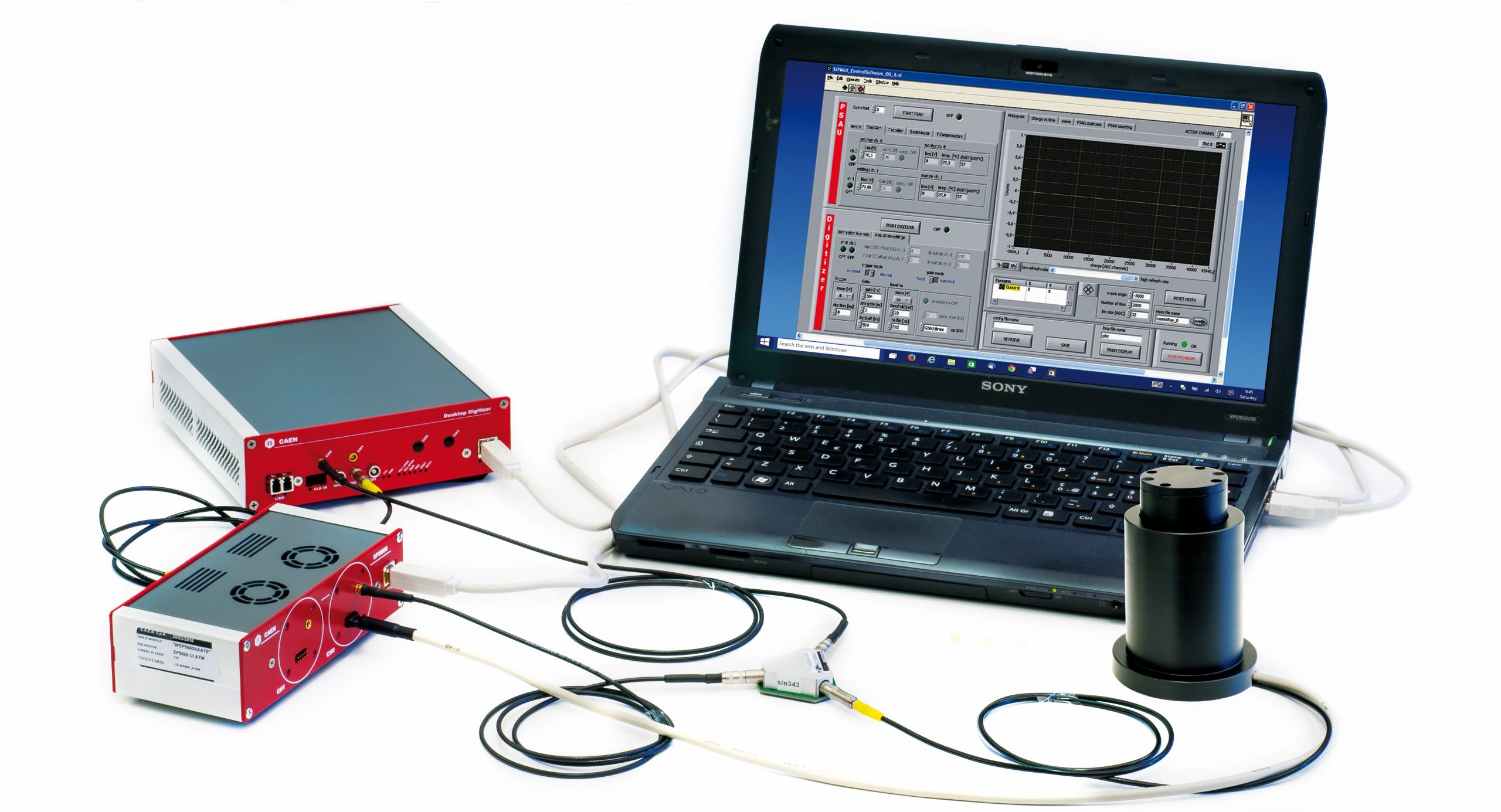| Difficult | Execution Time | Data Analysis | Radioactive Sources |
|---|---|---|---|
| No | Yes |
Hardware setup
This experiment guide is referred to the SP5600C/AN educational kit. If you don’t have this kit, choose your own from the following list to visualize the related experiment guide:
Equipment
- SP5600C/AN – Educational Gamma Kit
- Additional Gamma Radioactive Source

Purpose of the experiment
Compare the basic characteristics of different scintillating crystals, namely the light yield and the decay time of the scintillation light. Verify the effect on the energy resolution.
Fundamentals
Scintillating materials have different characteristics related to the light yield and the characteristics time of the emission. The CAEN spectrometer is provided with three different crystals: BGO (Bismuth Germanate), LYSO(Ce) (Cerium-doped Lutetium Yttrium Orthosilicate), CsI(Tl) (Thallium-doped Cesium Iodide). All of them have the same volume (6 x 6 x 15 mm3), are polished on all sides and coated with a white epoxy on 5 faces. One 6 x 6 mm2 face is open in order to be coupled with the Silicon Photomultiplier. The main characteristics of the crystals are summarized in the following table:
| BGO | LYSO (Ce) | Csl(TI) | |
| Density (g/cm3) | 7.13 | 7.4 | 4.51 |
| Decay Time (ns) | 300 | 40 | 1000 |
| Light Yield (ph./MeV) | 8200 | 27000 | 52000 |
| Peak emission (nm) | 480 | 420 | 560 |
| Radiation length (cm) | 1.13 | 1.14 | 1.85 |
| Reflective index | 2.15 | 1.82 | 1.78 |
The light yield is having an impact on the energy resolution. This is also affected by the decay time, constraining the integration time and implying a different effect of the sensor stochastic effects (dark counts and afterpulses).
Carrying out the experiment
The scintillator crystal shall be coupled to the SiPM in the SP5607, through a thin layer of index matching grease to maximize the light collection. In order to avoid saturation, the output of the SiPM is divided using the A315 splitter: one branch is connected to the DT5720A and will be digitized. The other branch will be amplified by the SP5600 module, generating the trigger for the integration signal by the on-board leading edge discriminator. The discriminator threshold shall be defined looking at the spectrum and evaluating the dark count rate. Once this is set and the radioactive source is properly positioned, the spectrum can be recorded. The procedure shall be repeated for every crystal.

Esperiment setup block diagram
Results
The crystal characteristics are investigated recording a source spectrum (for example 137Cs) with the three different crystals, optimizing the integration time as a function of the scintillation decay time.According to table, the Light Yield of the three crystal is very different. LYSO(Ce) has a light yield three times greater than the BGO, and CsI(Tl) light yield is twice than LYSO(Ce). The analysis of the signal waveform or the trend of the charge vs integration time leads to the measurement of the time characteristics of the scintillator.

137Cs energy spectra. Blue spectrum corresponds to the acquisition through LYSO crystal, the red and black ones respecttively with BGO and Csl crystals


